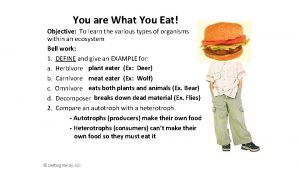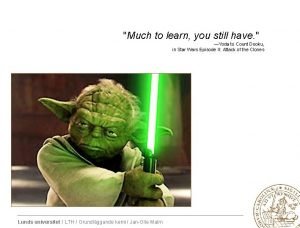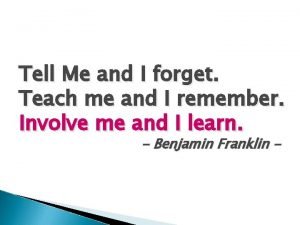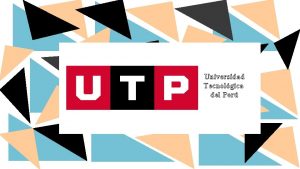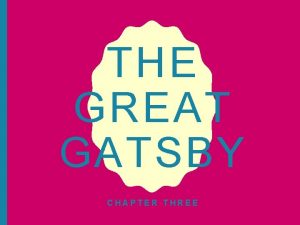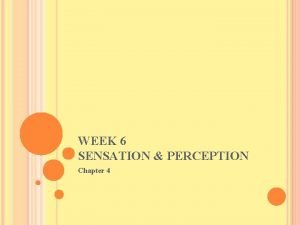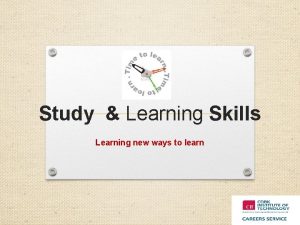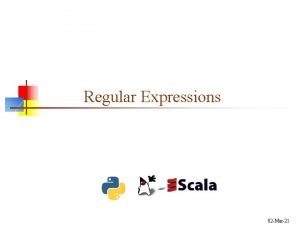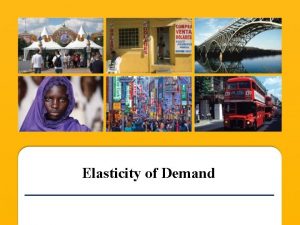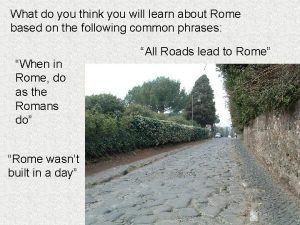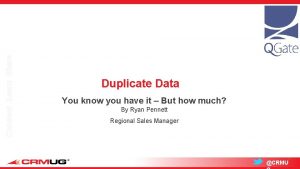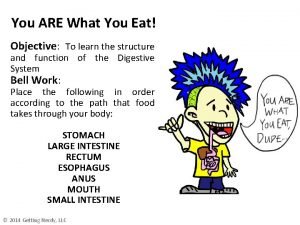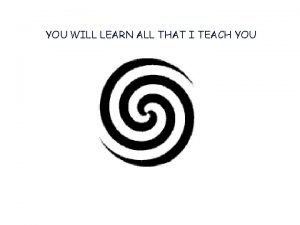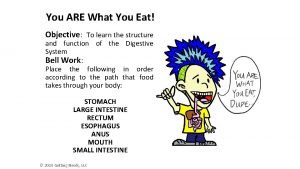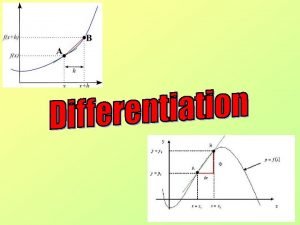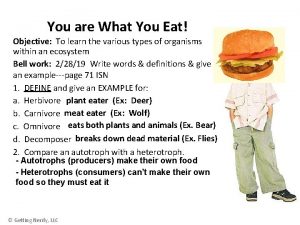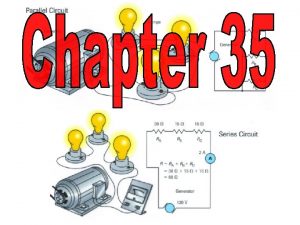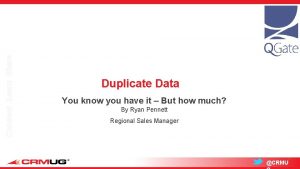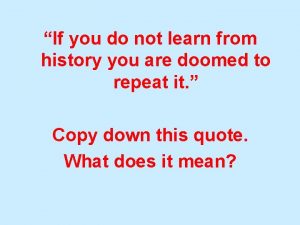WHAT YOU WILL LEARN IN THIS CHAPTER chapter





































- Slides: 37

WHAT YOU WILL LEARN IN THIS CHAPTER chapter: 9 >> Making Decisions Krugman/Wells © 2009 Worth Publishers 1 of 37

Ø How economists model decision making by individuals and firms Ø The importance of implicit as well as explicit costs in decision making Ø The difference between accounting profit and economic profit, and why economic profit is the correct basis for decisions Ø The difference between “either–or” and “how much” decisions Ø The principle of marginal analysis Ø What sunk costs are and why they should be ignored Ø How to make decisions in cases where time is a factor 2 of 37

Opportunity Cost and Decisions § An explicit cost is a cost that involves actually laying out money. § An implicit cost does not require an outlay of money; it is measured by the value, in dollar terms, of the benefits that are forgone. 3 of 37

Opportunity Cost of an Additional Year of School 4 of 37

FOR INQUIRING MINDS Famous College Dropouts § What do Bill Gates, Tiger Woods, and Madonna have in common? None of them have a college degree. § Each of them made a rational decision that the implicit cost of getting a degree would have been too high. By their late teens, each had a very promising career that would have to be put on hold to get a college degree. § It’s a simple matter of economics: the opportunity cost of their time at that stage in their lives is just too high to postpone their careers for a college degree. 5 of 37

Accounting Profit Versus Economic Profit § The accounting profit of a business is the business’s revenue minus the explicit costs and depreciation. § The economic profit of a business is the business’s revenue minus the opportunity cost of its resources. It is often less than the accounting profit. 6 of 37

Its all about the numbers… 7 of 37

Capital § The capital of a business is the value of its assets —equipment, buildings, tools, inventory, and financial assets. § The implicit cost of capital is the opportunity cost of the capital used by a business—the income the owner could have realized from that capital if it had been used in its next best alternative way. 8 of 37

Profits at Babette’s Cajun Cafe 9 of 37

►ECONOMICS IN ACTION Farming in the Shadow of Suburbia § In 1880, more than half of New England’s land was farmed; by 2006, the amount was down to 10%. § The remaining farms of New England are mainly located close to large metropolitan areas. Farmers get high prices for their produce from city dwellers who are willing to pay a premium for locally-grown, extremely fresh fruits and vegetables. § Maintaining the land instead of selling it to property developers constitutes a large implicit cost of capital. § About two-thirds of New England’s farms remaining in business earn very little money but nevertheless, they are maintained out of a personal commitment and satisfaction derived from farm life. 10 of 37

“How Much” Versus “Either–Or” Decisions 11 of 37

Marginal Cost The marginal cost of producing a good or service is the additional cost incurred by producing one more unit of that good or service. 12 of 37

Constant Marginal Cost § For every additional chicken wing per serving, Babette’s marginal cost is $0. 80. Babette’s portion size decision has what economists call constant marginal cost: each chicken wing costs the same amount to produce as the previous one. § Production of a good or service has constant marginal cost when each additional unit costs the same to produce as the previous one. 13 of 37

Marginal Cost Marginal cost (per wing) $4. 00 3. 00 2. 00 Marginal cost curve, MC 1. 00 0 1 2 3 4 5 6 7 Quantity of chicken wings 14 of 37

PITFALLS Total cost versus marginal cost § It can be easy to wrongly conclude that marginal cost and total cost must always move in the same direction. § What is true is that total cost increases whenever marginal cost is positive, regardless of whether it is increasing or decreasing. 15 of 37

Marginal Benefit The marginal benefit of producing a good or service is the additional benefit earned from producing one more unit of that good or service. 16 of 37

Marginal Cost - Marginal Benefit § The marginal cost curve shows how the cost of producing one more unit depends on the quantity that has already been produced. § Production of a good or service has increasing marginal cost when each additional unit costs more to produce than the previous one. § The marginal benefit of a good or service is the additional benefit derived from producing one more unit of that good or service. § The marginal benefit curve shows how the benefit from producing one more unit depends on the quantity that has already been produced. 17 of 37

Decreasing Marginal Benefit § Each additional lawn mowed produces less benefit than the previous lawn with decreasing marginal benefit, each additional unit produces less benefit than the unit before. § There is decreasing marginal benefit from an activity when each additional unit of the activity produces less benefit than the previous unit. 18 of 37

Marginal Benefit Marginal cost (per wing) Marginal benefit curve, MB 0 1 2 3 4 5 6 7 Quantity of chicken wings 19 of 37

Felix’s Net Gain from Mowing Lawns 20 of 37

Marginal Analysis § The optimal quantity is the quantity that generates the maximum possible total net gain. § The principle of marginal analysis says that the optimal quantity is the quantity at which marginal benefit is equal to marginal cost. 21 of 37

Babette’s Net Gain from Increasing Portion Size 22 of 37

Babette’s Optimal Portion Size Net gain (per wing) Quantity of chicken wings Marginal benefit (marginal cost per wing) 0 $3. 50 1 1. 70 2 0. 70 3 0. 40 4 $4. 00 0. 10 5 – 0. 10 6 – 0. 20 7 3. 00 Total net gain (profit per serving) $0 3. 50 5. 20 5. 90 6. 30 6. 40 6. 30 6. 10 2. 00 Optimal point 1. 00 MC MB 0 1 2 3 4 5 Optimal quantity 6 7 Quantity of chicken wings 23 of 37

PITFALLS Muddled at the margin § The idea of setting marginal benefit equal to marginal cost sometimes confuses people. § The point is to maximize the total net gain from an activity. If the marginal benefit from the activity is greater than the marginal cost, doing a bit less will increase the total net gain. § So only when the marginal benefit and marginal cost are equal is the difference between total benefit and total cost at a maximum. 24 of 37

►ECONOMICS IN ACTION The Cost of a Life § What’s the marginal benefit to society of saving a human life? In the real world, resources are scarce, so we must decide how much to spend on saving lives since we cannot spend infinite amounts. § The UK government once estimated that improving rail safety would cost an additional $4. 5 million per life saved. But if that amount was worth spending, then the implication was that the British government was spending far too little on traffic safety. § That’s because the estimated marginal cost per life saved through highway improvements was only $1. 5 million, making it a much better deal than saving lives through greater rail safety. 25 of 37

Sunk Cost § A sunk cost is a cost that has already been incurred and is non-recoverable. A sunk cost should be ignored in decisions about future actions. § Sunk costs should be ignored in making decisions about future actions. Because they have already been incurred and are non-recoverable, they have no effect on future costs and benefits. § “There’s no use crying over spilled milk. ” 26 of 37

►ECONOMICS IN ACTION A Billion Here, a Billion There… § § If there's any industry that exemplifies the principle that sunk costs don’t matter, it has to be the biotech industry. These firms use cutting-edge bioengineering techniques to combat disease. It takes about seven to eight years, on average, to develop and bring a new drug to the market. There is also a huge failure rate along the way, as only one in five drugs tested on humans ever gets to the market. Xoma company has suffered setbacks on several drugs addressing diseases as varied as acne and complications from organ transplants. Since 1981, it has never earned a profit on one of its own drugs and has burned through more than $700 million dollars. Xoma keeps going because it possesses a very promising technology and because shrewd investors understand the principle of sunk costs. 27 of 37

The Concept of Present Value § When someone borrows money for a year, the interest rate is the price, calculated as a percentage of the amount borrowed, charged by the lender. § The interest rate can be used to compare the value of a dollar realized today with the value of a dollar realized later, because it correctly measures the cost of delaying a dollar of benefit (and the benefit of delaying a dollar of cost). § The present value of $1 realized one year from now is equal to $1/(1 + r): the amount of money you must lend out today in order to have $1 in one year. It is the value to you today of $1 realized one year from now. 28 of 37

Present Value § § § Let’s call $V the amount of money you need to lend today, at an interest rate of r in order to have $1 in two years. So if you lend $V today, you will receive $V(1 + r) in one year. And if you re-lend that sum for yet another year, you will receive $V × (1 + r) = $V × (1 + r)2 at the end of the second year. At the end of two years, $V will be worth $V × (1 + r)2; If r = 0. 10, then this becomes $V × (1. 10)2 = $V × (1. 21). 29 of 37

Present Value § What is $1 realized two years in the future worth today? § In order for the amount lent today, $V, to be worth $1 two years from now, it must satisfy this formula: $V × (1 + r)2 = $1 § If r = 0. 10, $V = $1/(1 + r)2 = $1/1. 21 = $0. 83 § The present value formula is equal to $1/(1 + r) N 30 of 37

Net Present Value The net present value of a project is the present value of current and future benefits minus the present value of current and future costs. 31 of 37

►ECONOMICS IN ACTION How Big Is That Jackpot, Anyway? § On March 6, 2007, Mega Millions set the record for the largest jackpot ever in North America, for a payout of $390 million. The $390 million was available only if you chose to take your winnings in the form of an “annuity” consisting of an annual payment for the next 26 years. If you wanted the cash up front, the jackpot was only $233 million and change. § If the winner took the annuity, the lottery would have invested the money in U. S. government bonds and using the prevailing interest rates at the time, the present value of a $390 million spread over 26 years was just about $233 million. § So why didn’t they just call it a $233 million jackpot? Well, $390 million sounds more impressive! But it was really the same thing. 32 of 37

SUMMARY 1. All economic decisions involve the allocation of scarce resources. Some decisions are “either–or” decisions, other decisions are “how much” decisions. 2. The cost of using a resource for a particular activity is the opportunity cost of that resource. Some opportunity costs are explicit costs; they involve a direct payment of cash. Other opportunity costs, however, are implicit costs; they involve no outlay of money but represent the inflows of cash that are forgone. Companies use capital and their owners’ time. So companies should base decisions on economic profit, which takes into account implicit costs such as the opportunity cost of the owners’ time and the implicit cost of capital. 33 of 37

SUMMARY 3. A “how much” decision is made using marginal analysis, which involves comparing the benefit to the cost of doing an additional unit of an activity. The marginal cost of producing a good or service is the additional cost incurred by producing one more unit of that good or service. The marginal benefit of producing a good or service is the additional benefit earned by producing one more unit. 4. In the case of constant marginal cost, each additional unit costs the same amount to produce as the unit before; this is represented by a horizontal marginal cost curve. With increasing marginal cost, each unit costs more to produce than the unit before. In the case of decreasing marginal benefit, each additional unit produces a smaller benefit than the unit before. 34 of 37

SUMMARY 5. According to the principle of marginal analysis, the optimal quantity—the quantity that generates the maximum possible total net gain—is the quantity at which marginal benefit is equal to marginal cost. 6. A cost that has already been incurred and that is nonrecoverable is a sunk cost. Sunk costs should be ignored in decisions about future actions—they have no effect on future benefits and costs. 35 of 37

SUMMARY 7. To evaluate a project in which costs or benefits are realized in the future, you must first transform them into their present values using the interest rate, r. The present value of $1 realized one year from now is $1/(1 + r), the amount of money you must lend out today to have $1 one year from now. Once this transformation is done, you should choose the project with the highest net present value. 36 of 37

chapter: The End of Chapter 9 >> Supply and Demand Coming attraction: Chapter 10: The Rational Customer Krugman/Wells Economics © 2009 Worth Publishers 3
 Learn to learn
Learn to learn The more you study the more you learn
The more you study the more you learn You live to learn
You live to learn Getting nerdy llc
Getting nerdy llc Tiosulfat titrering
Tiosulfat titrering Dlle career project
Dlle career project What we can learn from ants
What we can learn from ants When will you learn to obey your teachers
When will you learn to obey your teachers Passive voice would
Passive voice would Teach me and i forget
Teach me and i forget What do you expect to learn
What do you expect to learn Phrases of quantity
Phrases of quantity Pakikipagkilala
Pakikipagkilala Universidad tecnolgica
Universidad tecnolgica Do you love rain
Do you love rain Good health is a choice agree or disagree
Good health is a choice agree or disagree If you think you can you can poem
If you think you can you can poem Tell me what you eat and i shall tell you what you are
Tell me what you eat and i shall tell you what you are Wherever you go i will follow whenever you know
Wherever you go i will follow whenever you know Percy jackson the lightning thief chapter 6
Percy jackson the lightning thief chapter 6 Learn to lead chapter 6
Learn to lead chapter 6 I hate careless people thats why i like you
I hate careless people thats why i like you Chapter 3-4 the great gatsby
Chapter 3-4 the great gatsby How is curley's wife described in chapter 2
How is curley's wife described in chapter 2 Describe 2 incidents involving automobiles in this chapter
Describe 2 incidents involving automobiles in this chapter Learn xtra grade 10
Learn xtra grade 10 Dimitri and linda are trying to learn a new routine
Dimitri and linda are trying to learn a new routine Sanskrit from home
Sanskrit from home Pros and cons in german
Pros and cons in german Learn hibernate
Learn hibernate Josh clayman
Josh clayman New ways to learn
New ways to learn Dlpy sas
Dlpy sas Learn pig latin
Learn pig latin What can we learn from the woopmay orogeny?
What can we learn from the woopmay orogeny? Learn.genetics.utah/content/addiction/mouse
Learn.genetics.utah/content/addiction/mouse Nihr learn
Nihr learn Http://learn.genetics.utah.edu/content/addiction/
Http://learn.genetics.utah.edu/content/addiction/



